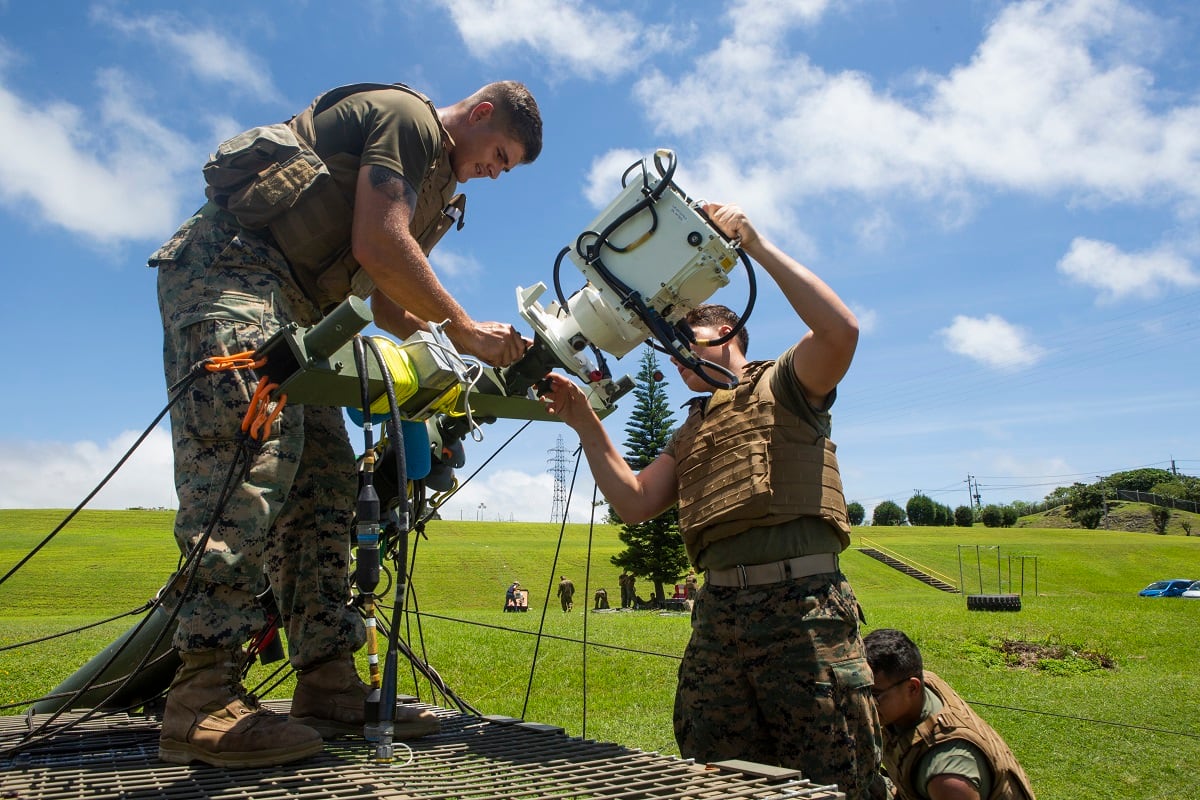MARINE CORPS BASE QUANTICO, Va. ― For decades or longer, Marines tasked with setting up a command post and ensuring that communications were encrypted faced hours, if not a day’s worth, of running cables through tents, hooking up individual crypto devices to nearly every piece of hardware and constantly reloading crypto keys.
That wasn’t only a massive time suck, it also meant that few, if any now ubiquitous civilian devices such as smartphones and tablet computers could come near the tactical network, for fear of a break in the security bubble.
In 2017 a tactical communications equipment company called PacStar showcased a Wi-Fi solution to that problem. By creating a simple user interface and hardware that incorporated a host of government-required systems, it put a 100-ft Wi-Fi bubble into the tactical mix.
RELATED

Think of something like a Starbucks Wi-Fi hotspot anywhere a command post tent can go. Only this time, nobody should be stealing your banking information or national security data.
This year the company, in partnership with OCEUS Networks, has boosted that signal to LTE levels. That advance broadens the connectivity bubble to more than two miles and it can take on 100 devices or more.
The “flip-switch” technology puts nearly all command post encryption in a box the size of a 24-pack of beer, coupled with an LTE amplifier-like device that can fit in a ruck or be mounted on a standard vehicle radio rack.
PacStar Chief Technical Officer Charlie Kawasaki told Marine Corps Times at the annual Modern Day Marine Expo in Quantico, Virginia, that the secure wireless command post is a 65-pound device that does the work a 500-pound system used to a few short years ago at a tenth the power requirements.
That fits nicely within the long-held expeditionary nature of the Marine Corps missions.
It can be configured within a standard command post, old-fashioned tent style, mounted on any medium or heavy-sized vehicle in the fleet or taken to a Forward Operating Base with enough power.
The nature of the setup means that a vehicle can do command post functions, sending and receiving encrypted data not only in one spot but also while on the move, rolling through an area of operations, Kawasaki said.
And, it’s off the backs of Marines. The only needed connection point or node for the individual Marine is their smartphone or other device.
The LTE network functions identically to what civilian users would see, meaning Full Motion Video, Skype-like voice calls and a variety of mobile applications, he said.
Some of its equipment is in use as the Army also explores making mission command posts more mobile through programs in the Army’s Communications-Electronics Research, Development and Engineering Center at Aberdeen Proving Ground, Maryland.
Todd South has written about crime, courts, government and the military for multiple publications since 2004 and was named a 2014 Pulitzer finalist for a co-written project on witness intimidation. Todd is a Marine veteran of the Iraq War.




